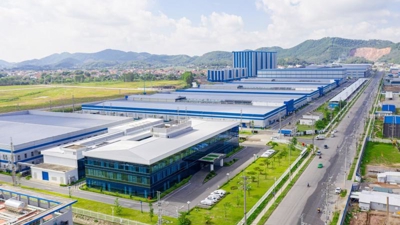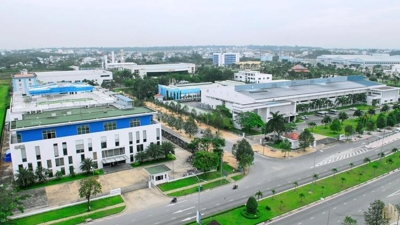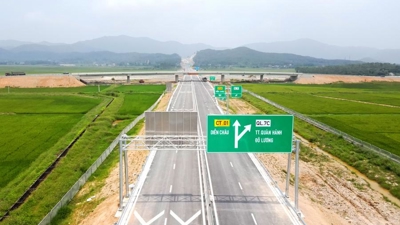Vietnam's Southeast Region Aims for Growth Surge with New Plan
Vietnam's Southeast region, a key economic engine that has experienced a recent slowdown, hopes to regain momentum with a new plan focusing on infrastructure and bottleneck removal.
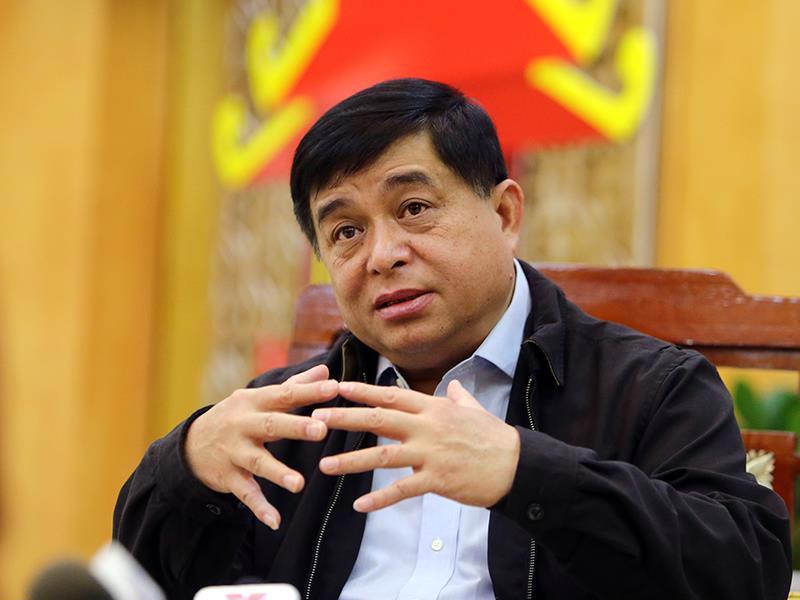
On May 4, 2024, Prime Minister Pham Minh Chinh signed Decision No. 370/QD-TTg approving the planning of the Southeast region for the period 2021-2030, with a vision to 2050.
Accordingly, the Southeast region aims for an average GRDP growth rate of about 8-9% per year during the period 2021-2030 and 7.5% per year during the period 2031-2050.
As a dynamic economic region that has led the country's GDP growth for many years, the Southeast is currently experiencing a slowdown in its GRDP growth.
Therefore, Minister of Planning and Investment Nguyen Chi Dung emphasizes that the Southeast region's planning for the period 2021-2030, with a vision to 2050, will be crucial for removing bottlenecks, reallocating resources, and facilitating the strong development of the region.
On the eve of the Southeast Region Coordination Conference and the announcement of the Southeast region's planning for the period 2021-2030, with a vision to 2050, taking place in Tay Ninh on May 5, 2024, Minister Nguyen Chi Dung made some comments, sharing the breakthroughs and significance of this plan for the region's future development.
After a period of sluggish growth, what does the Southeast Regional Plan for the period 2021-2030 and vision 2050 signify for the region's future growth?
The average GRDP growth rate of the region is trending downward, lower than the country's overall growth rate. Additionally, the region's contribution to the country's GDP is declining.
The Southeast region also faces numerous difficulties and challenges such as traffic congestion, inadequate infrastructure, flooding, and responding to climate change. While there is potential, many advantages remain untapped.
Therefore, the planning serves as a crucial foundation for removing bottlenecks and allocating resources, enabling the Southeast region to develop robustly; akin to a compressed spring, now unleashed and experiencing significant growth, releasing vast resources.
In my view, the planning holds several key meanings. First and foremost, it solidifies Resolution 24 of the Politburo regarding the development vision of the Southeast region. Secondly, it delineates development directions, spaces, and motivations for each region, locality, or economic sector.
Thirdly, the regional plan emphasizes a modern, interconnected infrastructure system for the entire region. This serves as the basis for rapid, sustainable, and long-term development for the entire country.
Discussing the content of this regional planning, we can focus on three principles: breakthrough, innovation, and connectivity. In terms of breakthroughs, we aim for breakthroughs in thinking, vision, and implementation.
Regarding innovation, the Southeast region must lead in dynamism, creativity, innovation, and reform; pioneering the formation of fields that lead and contribute to the country and surrounding regions; at the forefront of science and technology innovation; leading in education, training, social, and cultural development...
This represents the pioneering strength of the entire region. Regarding connectivity, I believe it has become an inevitable trend. We must emphasize regional connectivity to support and complement each other, exploiting and leveraging each other's potential advantages, contributing to greater value.
The resolutions of the 13th Party Congress and recent Politburo resolutions emphasize the significance and importance of regional integration.
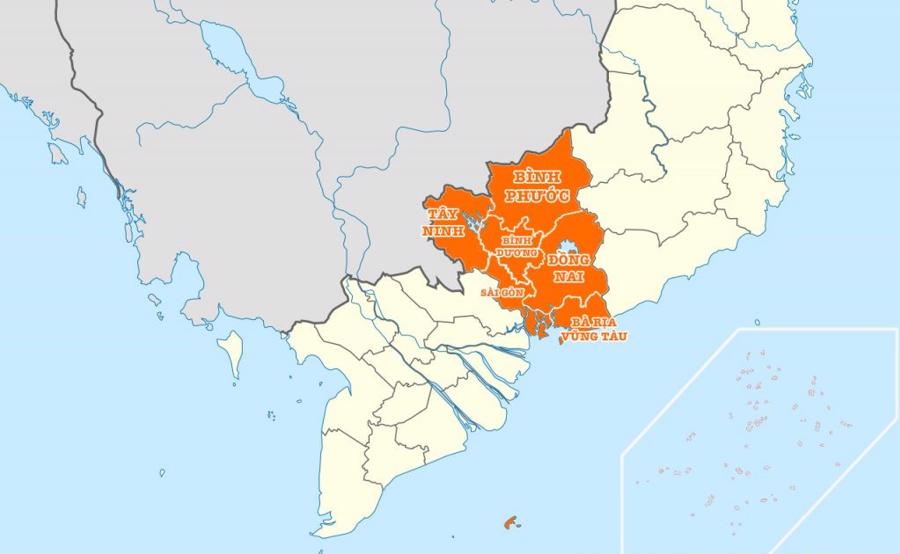
As you just emphasized, the Southeast region plays a unique role in the country and is a highly dynamic and creative region. What concerns you about this planning?
This plan underscores that Ho Chi Minh City and the Eastern Region are not only driving forces and growth poles of the entire country but must also be compared with other regions in the region, in Asia, and globally, in accordance with Resolution 24 of the Politburo.
Ho Chi Minh City will spearhead breakthroughs in productivity and economic competitiveness.
Thus, we have elevated the level of planning this time, defining the new mission of the region, as well as Ho Chi Minh City, to achieve higher and more outstanding development, which is entirely achievable.
As I mentioned, with effective planning and implementation, along with specific policy mechanisms and resource mobilization methods, and a determined approach to implementation, with united efforts from localities in the region, aiming towards common goals, the Southeast region will experience robust development.
It can be said that with such innovative thinking and vision, we will encounter new opportunities and values.
Can you elaborate more specifically on the innovative thinking in this planning?
There are various ways to approach innovative thinking, but for the Southeast Region, the approach is to turn the impossible into the possible, always pioneering, always leading, developing collectively, and overcoming challenges.
Such a mindset is crucial for strong development. Historically, Ho Chi Minh City and the Southeast region have been at the forefront of the country in terms of new economic models, institutions, mechanisms, and methods.
In the upcoming period, with new mechanisms, we should apply powerful, pioneering, and leading mechanisms to the region, particularly the Southeast and Ho Chi Minh City. This will lead to significant advancements.
While we have an enthusiastic, focused, innovative, and breakthrough-oriented plan, equally important is the implementation and execution of the plan. In your opinion, what aspects should be emphasized during the implementation of this plan?
Firstly, we must raise awareness of the role of regional linkages and regional planning. Unified awareness must precede action when discussing regional linkages. Secondly, specific and effective policy mechanisms for the region are necessary.
Recently, specific mechanisms and policies have been implemented for Ho Chi Minh City. We need to explore other policy mechanisms that can help us achieve our set goals and adapt them to the specific conditions of each region.
Presently, the Ministry of Planning and Investment is collaborating with ministries, branches, and localities to research specific policy mechanisms for this region and other regions in the country.
This will enable the promotion and development of the potential and strengths of each region. Thirdly, regions, especially the Southeast, must have their own resource mobilization mechanisms.
Relying solely on the state budget will make it challenging to realize our goals due to the substantial investment required. Bold investment in development, leveraging potential advantages, and macroeconomic space while ensuring safety will drive motivation for development.
Bold investment, as long as it's strategic and effective, is crucial for economic development. Additionally, focusing on development to maintain stability is vital; proactive development is necessary to avoid passivity. Effective and efficient implementation, with determination, speed, and effectiveness, is essential to achieving our goals and aspirations.

According to the Minister, how does this planning emphasize the issue of regional connectivity?
Regional connectivity encompasses various aspects such as infrastructure, social, climate change, training, and human resources. All these elements must be interconnected and supportive, complementing each other to capitalize on local opportunities and strengths.
For instance, once completed, Long Thanh Airport aims to become a regional and global transshipment center. We will establish a maintenance and repair logistics system, creating an economy revolving around the airport.
It will not only facilitate passenger transportation but also stimulate domestic import and export activities and potentially become a central hub on international shipping routes. Connecting it with other ports such as Cai Mep - Thi Vai will provide comprehensive support without competition.
In the near future, we will create green belts around belts 3 and 4, forming urban, industrial, and service zones. Additionally, we're establishing economic corridors like Ho Chi Minh - Bien Hoa Vung Tau and routes from Saigon to Can Tho, Ca Mau, linking provinces and neighboring regions for mutual development.
This planning imposes significant responsibilities on the implementing localities, a responsibility extending to the national, regional, and international levels. Does the Minister have any words to share with the localities?
I'd like to emphasize two points. Firstly, regional integration is an inevitable trend; thus, we must collaborate to develop collectively. Secondly, active and effective participation in the regional coordinating council's operations is crucial.
Major regional issues will be addressed within this council. Localities need to engage proactively. Issues that individual localities cannot resolve independently will be addressed by the regional coordination council.
Additionally, competent authorities must involve the council at higher levels. This activity holds immense importance. Through regulations and mechanisms, active participation in regional coordination activities will undoubtedly address many regional challenges in the future.




